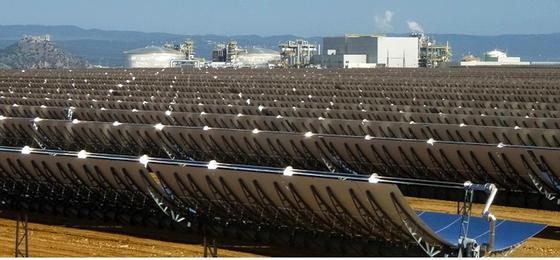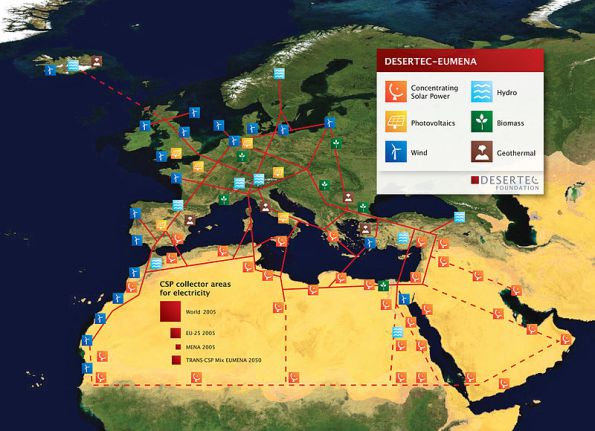Morocco doesn’t rank as one of the countries that receives the highest amount of sunshine in the world. But the leaders have taken a bold step to build the world’s largest solar power plant. Unlike a number of North African countries, Morocco imports over 90 percent of its energy from fossil fuel and also subsidizes the fuel for its citizens. But with the new solar power generation, Morocco plans to export electricity to Europe and Asia.
About The World’s Largest Solar Power Plant
Overseen by Moroccan Agency for Solar Energy (MASEN), the construction of the solar plant began on 10 May 2013. On Monday, 1st February 2016, Morocco switched on the first phase of the Ouarzazate solar power plant called Noor 1. It generates 160 megawatts of power and together with the further phases in Noor 2 and Noor 3 (due to be completed by 2018) will be the largest solar power plant in the world. The project will cover about 6,000 acres and produce 580 Megawatts. The estimated cost is 6.5 billion dollars which is sourced from international institutions majorly World Bank and European Investment Bank.

Noor 1 in southern of Morocco in operation. German engineers and companies such as Siemens have participated at the power plant, which will supply power to 1.2 million people. Photo: ACWA power VIA: cadincadout.com
Instead of photovoltaic panels, this plant uses thermal technology. This consists of 12 metre high parabolic mirrors which are able to track the Sun’s movement in order to maximize insolation. These mirrors are connected to a steel pipeline containing heat transfer solutions. The solution (oil) is heated by the solar rays and used to create steam which power emerging generating turbines thus producing electricity. This facility also enables supply of electricity even when the Sun goes down. This is possible through the energy stored by salts melted by the oil which holds heat for future use.
Over 1 million people are expected to directly benefit from the power project. The first phase of the project will produce 3 hours of power supply but when the project is complete, it will be expected to supply 20hours per day of electricity.
The Future Of Renewables In Morocco
Morocco plans to generate 42 percent of its energy from renewables by 2020. The North African country is taking lead with solar energy and will support it with wind and hydropower. The King of Morocco, Mohammad VI, is fully dedicated to making his country a renewable energy power house and is also committed to decreasing carbon emissions by 32 percent by 2030.
Moroccan government hopes the new efforts in renewables will cause a drop in the cost of electricity production by up to 14 percent. Further investment in renewables may cause an even delightful 44 percent drop in electricity costs.
Morocco currently imports electricity from Spain. But when this kicks off in full gear, the government plans to export electricity to Europe, and possibly Asia.

Map: Sketch of possible infrastructure for a sustainable supply of power to Europe, the Middle East and North Africa. (EU-MENA) proposed by TREC
Why Africans Should Be Excited?
Africans should be excited with every new breakthrough with clean energy. If the greenhouse emissions continue to rise, Africa is expected to be the hit the most by climate change. Droughts, floods and storms will be more severe. Africa is already the hottest continent and with increasing temperature due to global warming, it will become difficult to cultivate some crops like rice, maize and wheat. There are chances that diseases like malaria will also become more severe.
Morocco is showing new possibilities with the solar power plants. There is improved energy security and there are openings for employment and development of new industries. Increased development of new technologies like this may also present the opportunities for the reduction in cost of acquiring such solar facilities. Morocco does not rank top in African countries with the highest insolation. Egypt, South Africa, Niger, Chad, Sudan and so on may be inspired to launch localized models of Morocco’s power plants.
[Header image]– digitaltrends.com
